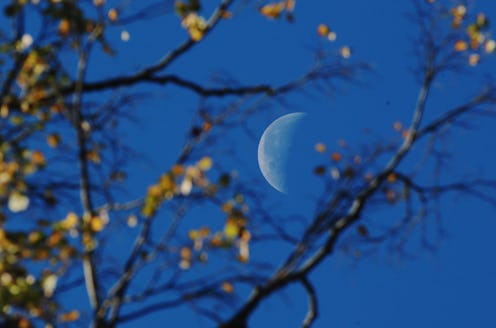News
How To Watch The May 21 Blue Moon
Although they may be rare, blue moons are one of the easier celestial events to catch. Here's how to watch Saturday's blue moon on May 21, which is truly a once in a blue moon situation.
I learned how difficult it was to catch celestial events as a child standing next to my mother in our driveway. With my head thrown back and my eyes squinted I was never too sure if the streak of light I saw moving across the sky was a meteor or a plane. There's a lot that can go wrong when it comes to sky gazing. Clouds are rarely compliant, your timing and geographic location must be exact, and, in many cases, your naked eye isn't enough to see the astronomical event in question. But that's precisely why a blue moon is a must-see experience.
With no need for equipment, no limit on which hemisphere you have to be in, and with a generous window of time during in which it is visible, watching a blue moon is incredibly easy. Unlike meteor showers or solar eclipses, you only need two things to see a blue moon: your eyes and a relatively cloudless sky. But don't go looking for a big blue disk illuminating the sky; blue moons aren't typically blue and the name has nothing to do with what color they are. Instead, the name refers to the rarity of the event.
The definition of a blue moon has changed over the years to include both the monthly blue moon and the seasonal blue moon. A monthly blue moon is a more recent definition that has cropped up in the field of astronomy and refers to two full moons that occur in the same month. What we'll witness on Saturday, May 21, however, is a seasonal blue moon, which is the third full moon in a series of four full moons occurring during the same season. The last seasonal blue moon occurred in August 2013.
This blue moon is especially unique as it also coincides with the opposition of Mars, making the red planet also visible in the night sky. Visibility should be "good" to "fair" for most of the central and southern states, according to AccuWeather. Unfortunately, this means stargazers on the East Coast or in many of the northern states might have a harder time catching a glimpse of this blue moon.
If armchair astronomy is more your thing, there are plenty of ways to watch the May 21 blue moon without even heading outside. The Slooh Telescope Internet channel will broadcast an up close view of the blue moon online starting at 8 p.m. ET.
Whether you opt for lawn chairs in the backyard, a sunset hike to a secluded viewing spot, or even a quick peek while standing in your driveway, this blue moon is one celestial event that shouldn't be missed. After all, you won't see anther blue moon until Jan. 31, 2018.
